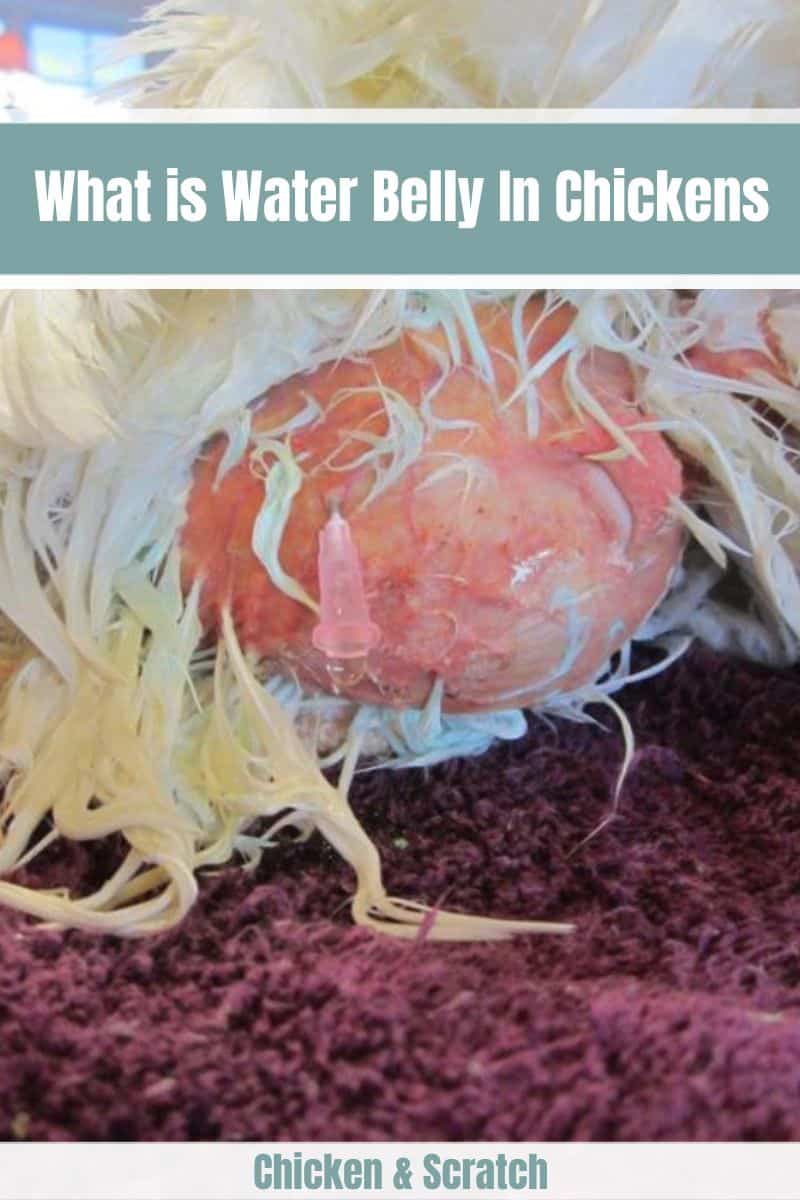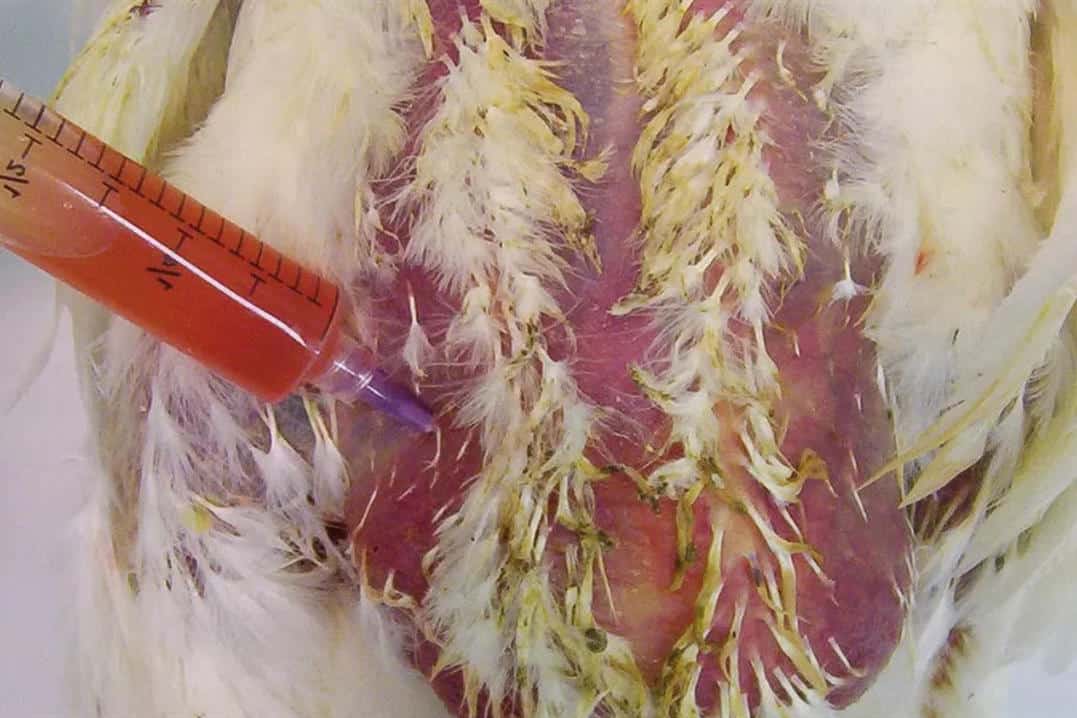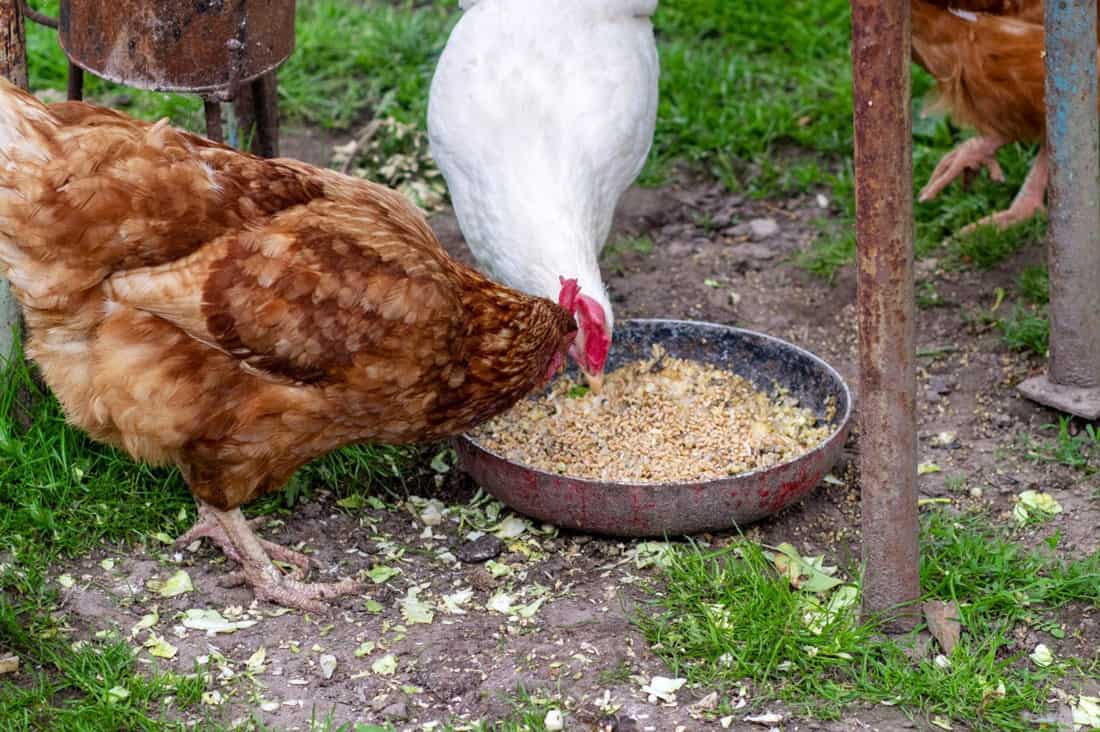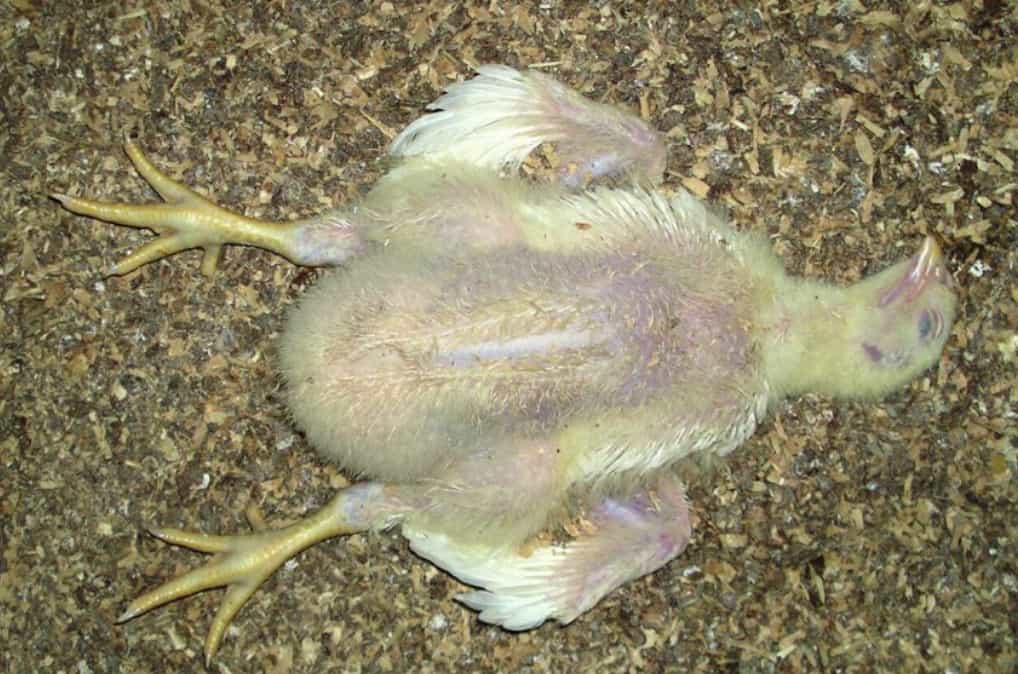Is the abdomen of your chicken swollen? Is it experiencing difficulty in breathing? Does it look lethargic compared to the others? If it fits these symptoms, you might need to visit your vet for a check-up! Your chicken might have a water belly. Or an underlying disease that needs immediate attention.

Here, we laid out what causes ascites, including the risk factors. Plus, the treatment and prevention that you can do at home.
What is Ascites or Water Belly in Chicken?
Ascites refer to an accumulation of excess fluids in the abdominal cavity. Thus the name: water belly. It is a condition that stems from a disease called pulmonary arterial hypertension (PAH) or ascites syndrome. It usually occurs in fast-growing broilers. And sometimes, in egg-laying hens, reared under a variety of conditions.
Additionally, ascites are non-inflammatory and non-infectious. But don’t get deceived, as it poses a high mortality rate in chickens.
What is the Pathology of Ascites?

Broilers or meat-type chickens have faster growth rates for efficient food conversion. That means increased egg production, higher meat yield, and breast percentage. If we compare modern-day and slow-growing chickens, the former can immediately achieve the market weight in 60% less time!
True enough, it sounds cost-effective to breeders. But this is also one of the reasons why some chickens develop PHA. Their body can’t keep up with the rapid changes causing the cardiopulmonary system to work up to its limit.
The heart starts to pump blood through the lungs to sustain the oxygen demand. But this increases the pressure in the pulmonary arteries. In time, it will result in right ventricular wall dilation and hypertrophy. Additionally, if the rest of the body grows faster than the lungs, it can cause hypoxia and ascites.
Risk Factors in Chickens

Several factors contribute to the development of a water belly in chickens.
- Old Age: Chickens also experience organ deterioration like the human body. It exposes the host to diseases or metabolic conditions once the system weakens.
- Genetics: Some breeds are genetically born with heart diseases. If you’ve confirmed an egg-laying hen has it, avoid selling or hatching eggs from it, as it may pass the ascites.
- Imbalance Nutrition: High-protein diet can disrupt the functions of the organs. It can lead to systemic conditions that cause a water belly.
- Food safety concerns: Stale and moldy feeds can attract unwanted bacteria. It can result in liver damage to chickens who ingests it.
- Environmental condition: extreme heat and cold can cause an imbalance. Too hot of a temperature can increase the risk of heart disease. Conversely, too cold can lower oxygen intake, resulting in ascites.
Physiological Changes That Cause Ascites in Chickens
Researchers found four physiological changes that can cause ascites:
- Lymphatic drainage obstruction: Oviduct carcinoma is a prevalent form of neoplasia. This kind of tumor can develop in the pancreas, oviduct, or ovary in egg-laying hens. It may prevent lymph outflow, resulting in fluid in the coelomic cavity.
- Decreased plasma oncotic pressure: Two factors might be to blame for this. First is the loss of high-protein lymph from the liver. Second is the stop-eating process caused by right ventricular hypertrophy.
- Fluid leakage: vascular damage occurs in the presence of viral and bacterial infection. In some cases, you can also find this in toxic chemicals and compounds ingestion.
- Increased portal pressure: Liver and heart diseases can result in portal hypertension. It can cause immediate death to the chicken without showing signs.
Signs and Symptoms of Ascites in Chicken

Chickens with ascites syndrome often present with the following signs and symptoms:
- Palpable fluid in the abdominal cavity
- Difficulty walking
- Discolored or shrunken comb
- Impaired growth development
- Lethargic behavior
- Difficulty breathing or is panting
- Swollen abdomen
In the worst cases, some chickens suddenly die without showing signs or symptoms. The condition itself can be so debilitating that visible ascites may not even develop. You’ll find affected birds lying on their back due to breathing difficulties after death.
To further confirm the ascites syndrome, the carcass undergoes necropsy. Post-mortem findings often reveal a clear, yellow fluid with fibrin clots in the heart. Aside from it, a swollen liver and congested lungs are evident.
Although, the presence of fluid is not always the determining factor. Even carcasses with enlarged right ventricles are diagnosed with ascites syndrome.
What is the Treatment for Ascites?

A high mortality rate in chickens with ascites occurs because there is no definite cure. Once your chicken gets it, continuous treatment is needed, along with the help of a medical professional.
The current known intervention is through paracentesis to remove the excess fluids. A thin, colorless fluid denotes that there is no infection present. But, a yellow cast or a pus-like material might state egg peritonitis or liver disease.
How To Do Paracentesis At Home
Ascites is a life-long condition you need to deal with every day. Luckily, paracentesis can be done at home following proper precautions.
Step 1: The first step for this procedure is to prepare the extraction tool and a clean cage with an absorbent pad. What type of tool you may ask? A 30mm or 60mm syringe with a needle will do. But the former is recommended as it is easier to use. Then sterilize it by spraying it with Oxine diluted in water.
Step 2: Once everything is ready, ask help from a friend or a family member to hold your chicken. And don’t attempt doing this alone if you don’t want to wreak havoc.
Locate the vent and work your way down until you palpate the balloon-like fluids. That spot would be the needle insertion site, so be sure to wipe the surrounding feathers clean.
Step 3: Insert the needle and slowly extract the fluid until it fills the syringe. Once filled, you can pull it out and empty it in a pint or sink. Then, twist the needle back on and pull until it’s hard to move. Place a napkin on the insertion site. Press it gently to stop leaking between extractions.
Step 4: At first, you’re chicken might feel uncomfortable. But after the removable, it will offer relief. Just make sure that you don’t rush everything to prevent injuries. If you notice signs of distress in your chicken, immediately stop the treatment. It is better to reschedule and give it some time.
How To Prevent Ascites on Chickens?
Preventing ascites is better than repeatedly treating the symptoms of your chickens. Of course, no flock parent wants to see their pets suffering from an incurable disease. So let’s take a look at some preventive measures to follow.
Make the Ideal Environment
Ventilation is the most influential environmental factor that affects ascites in chickens. Providing as much oxygen and ventilation in places with high altitudes is very crucial. When the flock gets exposed to low partial pressure, it can lead to an increased heart workload, causing ascites.
One good way to tackle this is to create a ventilation program using fan cycle timers. The on-time should be longer as chickens grow older to compensate for their increased respiratory needs.
Aside from this, correct litter management also contributes to maintaining air quality. Poor air quality can cause respiratory disease, reducing blood oxygen levels. Common house air contaminant that can increase ascites susceptibility includes:
- Dust
- Carbon dioxide
- Carbon monoxide
- Ammonia
A greater than ten ppm smell of ammonia can damage the lung surface, while 50 ppm can reduce the growth rate.
Balance Diet and Nutrition

There are many diet and nutrition management to decrease the risk of developing ascites. Here are some that are note-worthy and backed up by science:
- Dietary supplementation with vitamins C, E, and selenium can reduce the generation of free radicals related to the water belly.
- When added to the diet of broilers, tocopherol helps improve body antioxidants and prevent the incidence of ascites.
- Pellet feed form improves hygienic safety and reduces dustiness, improving the air quality inside the coop.
- L-carnitine has an antiperoxidative effect and role in increasing heart weight in chickens.
- Reducing the salt and adding bicarbonates to the diet is proven to decrease the mortality rate brought about by ascites. It is also cost-effective for poultry farmers.
- Complete feeds for broiler chickens should be at low energy levels. Fats should meet energy requirements rather than glucose.
- Feed restriction, either quantitative or qualitative, during the first week of life, decreases death by 75%.
- Feed ingredients rich in n-3 fatty acids, like fish oil, is beneficial in alleviating PAH.
How Long is the Life Expectancy of a Chicken with Ascites?

It depends on the underlying condition of the chicken and if treated or not. In some cases, chickens suddenly die because the disease is either too severe or not remedied.
Affected chickens can live up to several months. That is if given an early diagnosis and treated continuously. Others can reach up to a year, but the deterioration in the body and organs is evident.
Take Away
Water belly or ascites is a condition you don’t want your chickens to get. It is life-long, and no treatment can cure it.
Take preventive measures by following the ideal environment for your flock. And provide them with the balanced diet and nutrition they need. After all, ascites syndrome is not the only condition we’re veering away from. But also other potential conditions brought about by mismanagement.

Joseph Hudson has been raising chickens for over 15 years. In 2018, he completed the Agriculture & Natural Resources program at Mt. San Antonio College. He currently raises over 1400 chickens on his 7.5-hectare farm. He keeps sharing his experience on raising healthy and happy chickens on Chicken Scratch The Foundry.







